Methamphetamine Drug Facts, Use, Effects, Abuse, & Treatment
Methamphetamine, popularly known as "meth," is one of the powerful stimulants of the central nervous system. It is sometimes a second-line treatment for attention deficit hyperactivity disorder (ADHD) and obesity. However, meth is better known as a recreational drug. Continue to read more about meth addiction signs, symptoms, and treatment.
By We Level Up | Editor Yamilla Francese | Clinically Reviewed By Lauren Barry, LMFT, MCAP, QS, Director of Quality Assurance | Editorial Policy | Research Policy | Last Updated: March 31, 2023
Meth Addiction Overview
Methamphetamine is a potent CNS (central nervous system stimulant.) Methamphetamine is mainly known as a recreational drug that goes by its slang name, “meth.” Short-term stimulant effects frequently cause consciousness, alertness, higher mood, wakefulness, increased speech, and increased motor activity. However, regular use of prescription or illegal stimulants can increase an individual’s risk of developing a substance use disorder.
Methamphetamine was discovered in 1893 as a chemical subgroup of two other chemicals, dextromethamphetamine and levomethamphetamine. Methamphetamine originated from amphetamine in Japan after two decades, in 1919. But due to the unlawful trafficking and recreational use of methamphetamine, levomethamphetamine, and dextromethamphetamine, the agent is a Schedule II controlled substance in the US and the United Nations Convention on Psychotropic Substances. [1]
Crystal Meth Addiction Treatment
Stimulant addiction treatment is often critical due to how extensively meth and other stimulants affect the body. A meth addict behavior is described as the inability to stop using the drug regardless of the harmful physical, psychological, or social side effects it is causing an individual. Many US citizens face an addiction crisis that can be overcome with proper intervention and ongoing treatment. This drug is commonly used illicitly in forms such as crystal meth.
Crystal meth is simple to get and inexpensive for the duration of the high. For instance, a modest amount of crystal meth, perhaps ten dollars, might allow one or two people to stay high and party for a whole day or more. A meth addicted person is using a bong, or other paraphernalia, to smoke the drug; some also inject it for quicker effects. Additional reasons meth heads crave the substance include rapid weight loss and the fact that it lowers inhibitions and improves libido.
How addictive is crystal meth? Some people turn to this stimulant when their tolerance to another drug increases, so they can no longer get high. Crystal meth not only provides the high that addicts want, but it is also less expensive and lasts longer. Medical detox is the first step in meth addiction therapy.
To get beyond the uncomfortable withdrawal symptoms in a setting under medical supervision, detox is usually the first step in professional treatments for meth addiction programs. Once stabilized, patients typically enroll in an inpatient or residential rehab program to receive therapy and acquire the skills necessary for long-term sobriety and recovery.
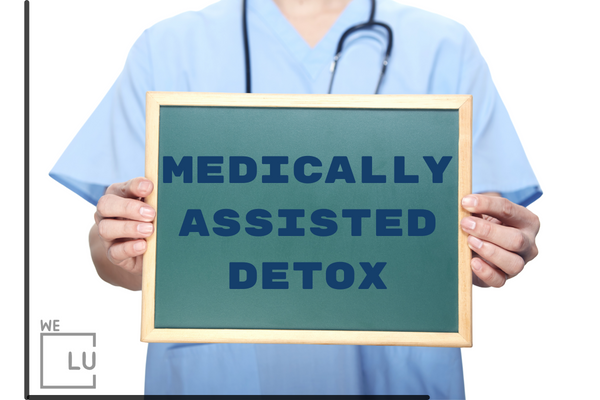
Medication for Meth Addiction
Methamphetamine dependency is a severe worldwide public health problem with significant medical, psychiatric, socioeconomic, and legal consequences. But the development of methamphetamine medications is at an early stage. No considerable evidence for efficacious medication treatment for meth addiction has yet emerged. Presently, there are no FDA-approved medications for the symptoms of meth addiction.
Thus, psychological treatments become increasingly important in the options for intervention if you are looking for rehab for meth addiction. Treatment with cognitive behavioral therapy appears to be associated with declines in meth use and other positive transformations, even over brief treatment periods.
Throw out the stereotypical idea of an “addict” while dealing with a functioning meth addict. These aren’t the people pulling shopping carts up and down the sidewalks of skid row. In truth, they work long hours only to keep up appearances and preserve their employment. They can have career success, have active social lives, and hide their substance abuse from the people they care about the most, at least for a time. Sadly, the “functional meth addict” component comes at a high cost and risk. Friends and loved ones are often unaware of a problem since functional addicts are excellent at disguising their troubles and covering their tracks.
Why Is Meth So Addictive?
Meth addiction strikes many individuals quickly. Regardless of the method, stimulant use affects several neurotransmitter systems throughout the brain. The chemical elicitation of rewarding euphoric feelings and mood-enhancing capabilities, mediated partly by enhanced dopamine release in critical brain locations, contributes to meth’s addictive propensity. This can result in a unique sensation of well-being that is impossible to recreate.
Using Meth Addiction Signs
Available in many different forms, meth can be smoked, snorted, injected, or ingested orally. Each method will have a different effect on the user, and the time the drug is active will differ slightly from one form of use to the next. Various methods of administration that can affect the user include the following:
- Injecting meth leads to an intense rush or flash of a high, described as a pleasurable state that typically only lasts a few minutes.
- Snorting or oral consumption leads to a less intense rush that lasts anywhere from 5 to twenty minutes and can linger.
- Smoking meth leads to fast drug uptake into the brain and can amplify the dependence potential and many adverse health effects, such as lung tumors and other problems.
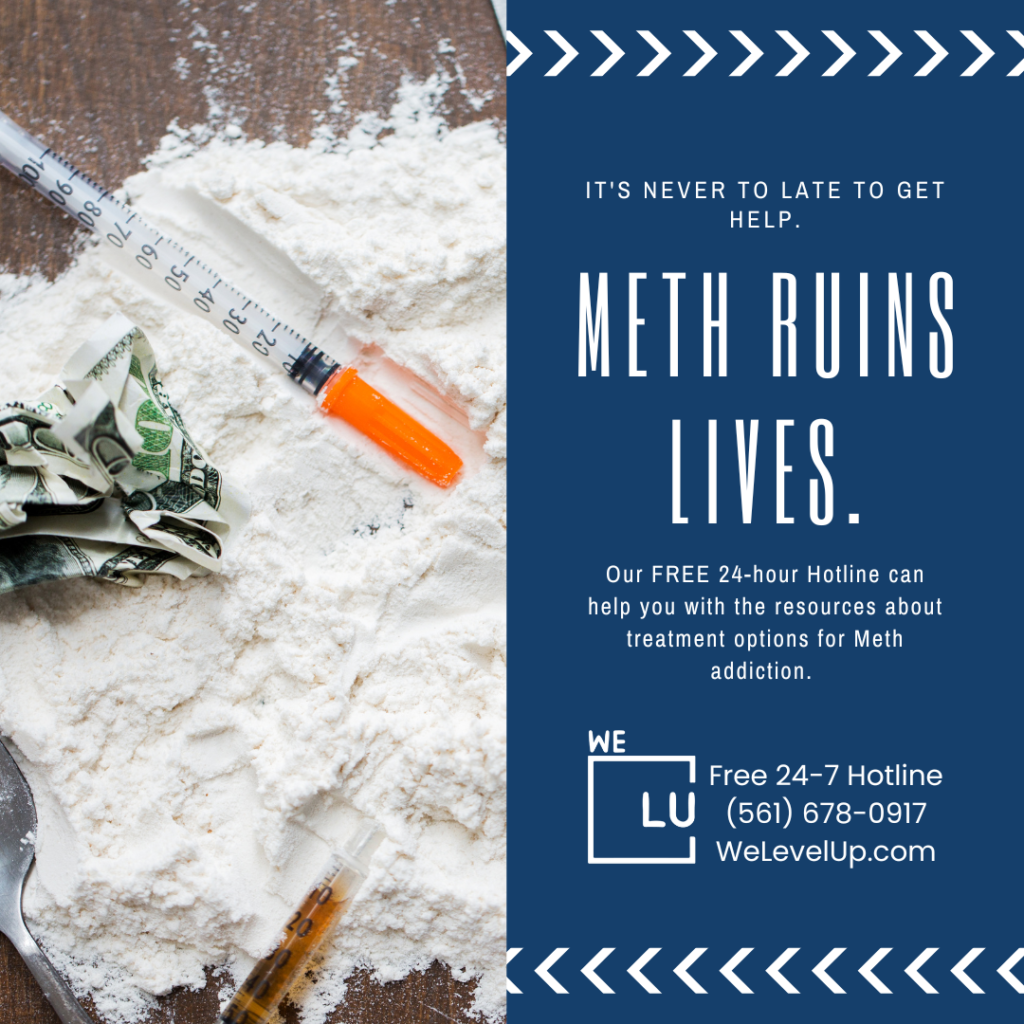
Skip To:
Learn More:
- Meth Slang Names
- Booty Bump Meth
- Crystal Meth Addiction
- High Functioning Meth Addict
- What Does Meth Feel Like?
- Meth Mouth
- Meth vs Heroin
- How Long Does Meth Stay in Your System?
- Methamphetamine Overdose
- Methamphetamine Detox
Meth Addiction Pictures Before and After
Methamphetamine addiction can have serious long-term consequences, altering a person’s physical health, emotional well-being, behavior, and meth addiction face. Because meth may be so dangerous, getting someone aid as soon as possible is critical. Another typical symptom of a meth addict face is severe dental decay, sometimes known as “meth mouth” or “meth addict teeth” in the media.
Although the individual is responsible for recognizing their problem and seeking treatment, your influence can correctly point to them. Knowing they have individuals who care about them may motivate them to seek suitable addiction therapy.

Methamphetamine Drug Facts
How Is Meth Used?
Is meth addicting? Yes. Methamphetamine users have several means of taking the drug to achieve a high. They may take the drug in pill form, smoke it, inject it, or snort it. Smoking or injecting meth produces an instant high that lasts between 8 and 12 hours, which leads many people to take repeat doses to remain high. When taken orally, the drug’s effects can last 6–12 hours but are not as intense.
Each method has various effects on the users. One of the most noticeable meth addict symptoms is the worsening meth addiction skin. A meth addict before and after may show severe decaying teeth, noticeable premature aging, and meth sores.
How To Get Meth Addiction Help For A Loved One?
How to help a meth addict? If someone you’re concerned with is misusing meth and cannot stop on their own, it may be time to seek professional help. If they are in rejection of their harmful conduct, you may want to set up an intervention with an addiction specialist and gather their close friends and family constituents. This individual may also know they are addicted but cannot stop despite trying to quit. In this case, it would be helpful for you to support them in their recovery by finding them a nearby meth addiction treatment center with medical professionals who can assist in their detox, treatment, and rehab.
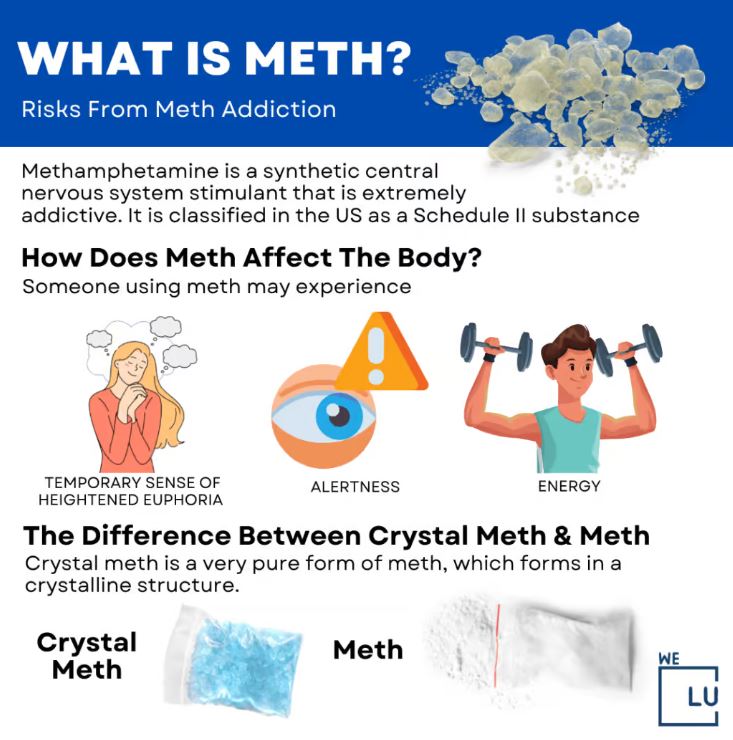
Throughout the 1990s, recreational methamphetamine use soared globally. It is said to be the second most often abused drug, second only to marijuana or cannabis. Methamphetamine is a Schedule II stimulant, which means it has a significant potential for abuse and a currently recognized therapeutic function, according to the Controlled Substances Act (in FDA-approved products).
It’s a widespread party drug known as “ice” or “glass.” Meth or crystal meth is often smoked with a tiny glass pipe, although it may also be swallowed, snorted, or injected into a vein.
Despite its euphoric effects, it can be a brutal and intense substance use to break. It can cause numerous health adversities, sometimes resulting in death and overdose.
Methamphetamine Drug Fact Sheet Made Publicly Available by the DEA

Get Your Life Back
Find Hope & Recovery. Get Safe Comfortable Detox, Addiction Rehab & Dual Diagnosis High-Quality Care.
Hotline(844) 597-1011Meth Addiction Recovery Rates & Statistics
With the passage of the Controlled Substances Act in 1970, methamphetamine, as well as other stimulants, such as cocaine, were placed on Schedule II as drugs with a high potential for abuse which may lead to severe physiological dependence. The 2019 National Survey on Drug Use and Health reported that roughly 2 million US citizens 12 years or older used methamphetamine in the past year, making it the second most commonly used illicit stimulant.
What percent of meth addicts recover? The success rate of crystal meth users to continue sobriety after three years without any rehabilitation or substance use disorder treatment is ONLY 5%. [3]
Meth Addiction Infographics
A meth high comprises several phases that might last for hours or days. Unlike cocaine, meth produces a prolonged high that occurs in phases. A user is high for around 14 hours during the meth rush period. Dopamine surge meth supplies are practically immediate and intense in their early stages. Individuals sense a surge of energy as their hearts accelerate, culminating in a high of fast speaking and confidence.
When the meth high wears off, emotional troubles emerge due to exhaustion and the inability to re-experience a methamphetamine high. Individuals who use meth frequently describe the period following meth high as emptiness, loss, and drug cravings. This phase following high meth is dangerous for the person and everyone around them because they tend to injure themselves. This period after the meth high is usually called “tweaking.”
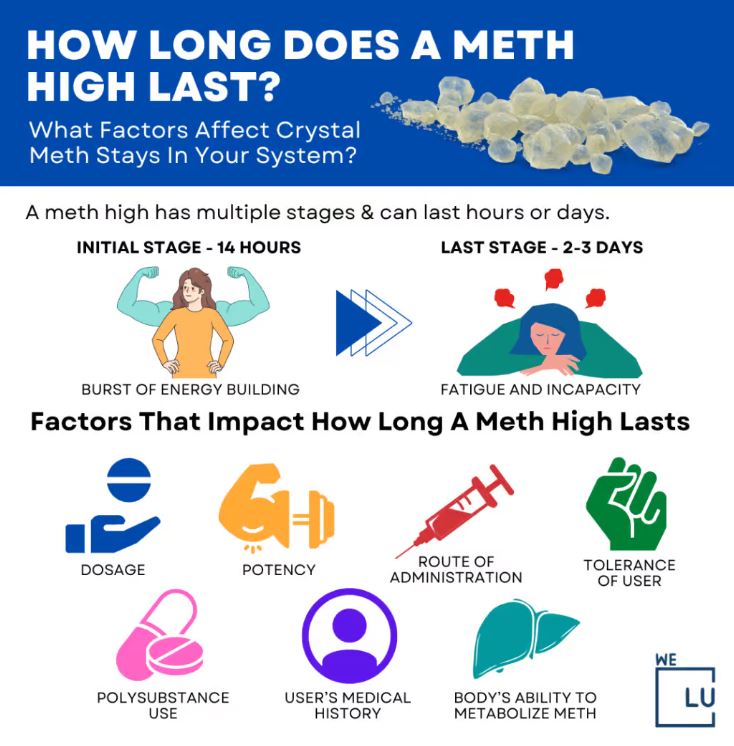
Embed the above “How Long Does A Meth High Last?” Infographic to your Website. This infographic is provided by the We Level Up addiction treatment center team. To use the above infographics, you agree to link back and attribute its source and owner at https://welevelup.com/addiction/meth/
What is Meth infographic image link: https://welevelup.com/wp-content/uploads/2021/10/How-Long-Does-Meth-Stay-in-Your-System.jpg
How Long Does Meth Stay In Your System?
Because everyone is different, there is no standard duration for how long meth stays in your bloodstream. A variety of things influences this quantity. In general, the “high” that meth users experience begins quickly. Some persons have a faster meth metabolism than others. The drug’s effects ordinarily last six to twelve hours. Yet, residues of meth might be discovered in a person’s system months later. The length of time the drug remains in the body varies based on the amount of meth used, the individual’s physical attributes, and the frequency of usage.
Embed the below “How Long Does Meth Stay In Your System?” Infographic to your Website. This infographic is provided by the We Level Up addiction treatment center team. To use the above infographics, you agree to link back and attribute its source and owner at https://welevelup.com/addiction/meth/
What is Meth infographic image link: https://welevelup.com/wp-content/uploads/2023/01/How-Long-Does-Meth-Stay-in-Your-System.jpg

Top 10 Signs of Meth Addiction FAQs
-
How addictive is meth?
Methamphetamine is a highly habit-forming psychostimulant substance that is a derivative of amphetamine. It can produce euphoria and stimulant effects like other stimulants, such as cocaine. Furthermore, methamphetamine is easily synthesized from inexpensive and readily obtainable chemicals.
-
What does a meth addict look like?
The effects of meth face and meth addict skin on crystal meth users can be devastating, including meth sores from skin picking, muscle loss, tooth decay, tooth loss, gum disease, and discolored teeth.
-
How long does it take to get addicted to meth?
The usage of meth in any quantity is cause for worry. It can be a habit-forming reason for concern whether you or a loved one is addicted or has taken meth once or twice.
-
Is meth physically addictive?
Yes. People addicted to meth suffer physical and psychological dependence.
-
What percentage of meth addicts recover?
Long-term recovery is attainable from methamphetamine abuse. However, the success rate is only 5 percent without proper care and rehab treatment.
-
Is crystal meth addictive?
Yes. Crystal meth is the common name for methamphetamine, a powerful and highly addictive stimulant.
-
How addicting is meth?
Methamphetamine’s ability to release significant quantities of dopamine in the brain makes it highly addictive. Fortunately, effective therapies exist for people trying to quit methamphetamine addiction.
-
How to help meth addicts?
If a loved one abuse methamphetamine, discussing their drug usage and treatment alternatives may be appropriate. Meth is a deadly narcotic that can lead to death if used.
-
What is the effect of meth addiction before and after?
The statistics on meth abuse rehabilitation are comparable to those on all other drug addictions. It’s important to realize that a week of detox removes the physical dependence on meth, leaving the addict with the disease of addiction. Meth has relapse rates comparable to those of other chronic disorders like hypertension as a chronic, recurrent mental condition.
-
What are the signs of a meth addiction?
Someone under the influence of methamphetamine may exhibit the signs of a meth high, such as intensely pleasurable rush/euphoria, high energy and motivation, altered sleeping patterns, diminished appetite, higher body temperature, quicker heart rate, and faster breathing.
Get Help. Get Better. Get Your Life Back.
Searching for Accredited Drug and Alcohol Rehab Centers Near You?
Even if you have failed previously and relapsed, or are in the middle of a difficult crisis, we stand ready to support you. Our trusted behavioral health specialists will not give up on you. When you feel ready or just want someone to speak to about therapy alternatives to change your life call us. Even if we cannot assist you, we will lead you to wherever you can get support. There is no obligation. Call our hotline today.
(844) 597-1011Meth Addiction Symptoms & Signs
Why is meth addictive? Meth impacts the brain’s serotonin levels, which regulate mood, appetite, and memory. When the effects of methamphetamine wear off, the brain is depleted of dopamine and serotonin, creating feelings of depression and anxiety. Repeated use of methamphetamine also leads to tolerance, meaning that users need higher doses to receive the same effect. These higher doses fuel the addiction to the drug.
The short-term psychological effects of methamphetamine include the following:
- Euphoria-like extreme happiness.
- Heightened sense of well-being.
- Increased alertness.
- Increased wakefulness.
- Excitement.
- Edginess, anger, irritation, or anxiety.
- Paranoia.
- Unpredictable behavior.
- Urges to do repetitive or meaningless tasks.
Some of these effects, such as euphoria, excitement, and a heightened sense of well-being, can make the user want more and more of the drug. Short-term physical effects of methamphetamine include the following:
- Increased physical activity.
- Decreased appetite.
- Rapid breathing rate.
- Fast or irregular heart rate.
- Elevated body temperature, like overheating.
- High blood pressure.
- Dilated pupils.
- Twitching.
- Headache.
- Tremors.
- Seizures.
- Uncontrollable jaw clenching.
- Dry mouth.
- Sweating.
- Nausea and vomiting.
- Diarrhea.
Even with this long list of physical effects, most are negative. Users may still become addicted to meth due to the perceived psychological effects listed above, despite this adverse physical harm.

In addition to the damage to dopamine-producing cells, studies have shown that the damage to nerve cells containing serotonin may be even greater.
Long-term psychological effects of methamphetamine include the following:
- Mood swings.
- Paranoia.
- Confusion.
- Hallucinations.
- Memory loss.
- Psychosis.
- Suicidal thoughts.
- Homicidal thoughts.
- Anxiety.
- Sleeping difficulties.
- Aggressive behavior.
- Delusions.
Many of these effects may continue for several months or even years after users have stopped taking the drug. Research has indicated that at least 50% of the brain’s cells that produce dopamine can be damaged from long-term use of even low doses of meth.
First-class Facilities & Amenities
World-class High-Quality Addiction & Mental Health Rehabilitation Treatment
Rehab Centers TourRenowned Addiction Centers. Serene Private Facilities. Inpatient rehab programs vary.
Addiction Helpline(844) 597-1011Proven recovery success experience, backed by a Team w/ History of:
15+
Years of Unified Experience
100s
5-Star Reviews Across Our Centers
10K
Recovery Success Stories Across Our Network
- Low Patient to Therapist Ratio
- Onsite Medical Detox Center
- Comprehensive Dual-Diagnosis Treatment
- Complimentary Family & Alumni Programs
- Coaching, Recovery & Personal Development Events
Meth Addicts Pictures
In these meth addiction pics, we see a man whose transformation is unfortunate. The person in the first shot appears to be in their forties. He looks to maintain his hygiene, and his face still has many years of youth. He seems to be a completely different guy after years of using meth.

Long-term physical effects of methamphetamine may include the following:
- High blood pressure.
- Meth mouth is like severe dental problems.
- Increased risk of contracting Hepatitis B, Hepatitis C, and HIV.
- Parkinson’s or Alzheimer-like symptoms due to brain damage.
- Significant weight loss.
- Anorexia.
- Damaged nerve terminals in the brain.
- Liver and kidney damage.
- The feeling of “meth bugs” crawling on the skin.
- Lung disease.
- Heart problems.
- Meth sores are caused by scratching due to hallucinations of “meth bugs.”
Some psychoactive drugs, such as cocaine and crystal meth, can have the side effect of grandiosity. If the person cannot see himself objectively and cultivates an excessive feeling of his importance, specialness, or self-worth, this transitions into delusion. Sometimes, the misconception is blatantly at odds with how others perceive the person.
Meth Overdose Symptoms
The use of methamphetamine can cause physical and psychological dependence and increased tolerance. Because of the rapid development of tolerance, methamphetamine users frequently need to increase the dose to get to the satisfying “high,” which can be very dangerous because too much methamphetamine also increases the risk of an overdose.
Symptoms of meth overdose include the following:
- Dangerously high body temperature.
- Convulsions.
- Stroke.
- Heart attack.
- Death.

Methamphetamine Addiction Treatment
Medical detox is frequently the initial step in meth addiction treatment. Methamphetamine usage and overuse raise your tolerance, which can result in physical dependence and unpleasant withdrawal symptoms if you decide to stop using it. Because of this, your doctor will probably advise a medically aided detox followed by counseling.
Various forms of effective meth addiction treatment are available to those with a meth addiction, and the best meth addiction treatment options depend on each individual. Most people addicted to meth will go through withdrawal, and detoxing from meth is the first step before meth addiction treatment.
Stimulant withdrawal is typically less physically dangerous than withdrawal from some other substances, such as alcohol, opioids, and sedatives. However, methamphetamine withdrawal can produce seizures in some people. Other potential dangers include suicidal ideation and the risk of overdose upon relapse.
It generally takes about a week for these symptoms to go away, but the timeline for each person’s withdrawal symptoms may vary.
Detox should be followed by other forms of meth addiction treatment that address the behavioral and cognitive issues associated with addiction. Inpatient drug rehab or residential treatment occurs when you stay at a facility around the clock while receiving counseling and support.
Variety Of Treatment For Meth Addiction
Meth addiction treatment begins with medical detox. Once that is complete, there are a variety of treatments that can help with recovery, including the following:
- Behavioral Therapy – Changing behaviors that would once trigger the use of drugs into behaviors that are now productive and do not include drug abuse.
- Family Education – Teach others about meth addiction treatment and how they can help their loved ones by not facilitating the addiction but supporting their recovery.
- The Matrix Model – For those who battle methamphetamine addiction, there is a 16-week behavioral treatment program called the Matrix Model. It incorporates family education, counseling, a 12-step component, behavioral treatment, drug testing, and promoting activities unrelated to drugs.
- Individual Counseling – Providing a safe place for the addict to get help for their addiction without having to worry about the thoughts of others. Individual counseling also allows for a place to talk about potential causes of substance abuse, such as past or present physical abuse or trauma.
- 12-Step Therapy – Drug addiction recovery groups are available in communities to provide social support for recovering addicts.
- Contingency Management Interventions – These programs offer incentives to the patient when they go a set amount of time without using meth by providing coupons or vouchers to assist them in finding something they like as a reward. The coupon may be for a free meal, a special gift, or something else of value.
Treating Meth Addiction With Behavioral Therapies
Behavioral therapy is an effective treatment for meth addiction. Some behavioral therapy techniques that are commonly used in treatment may include:
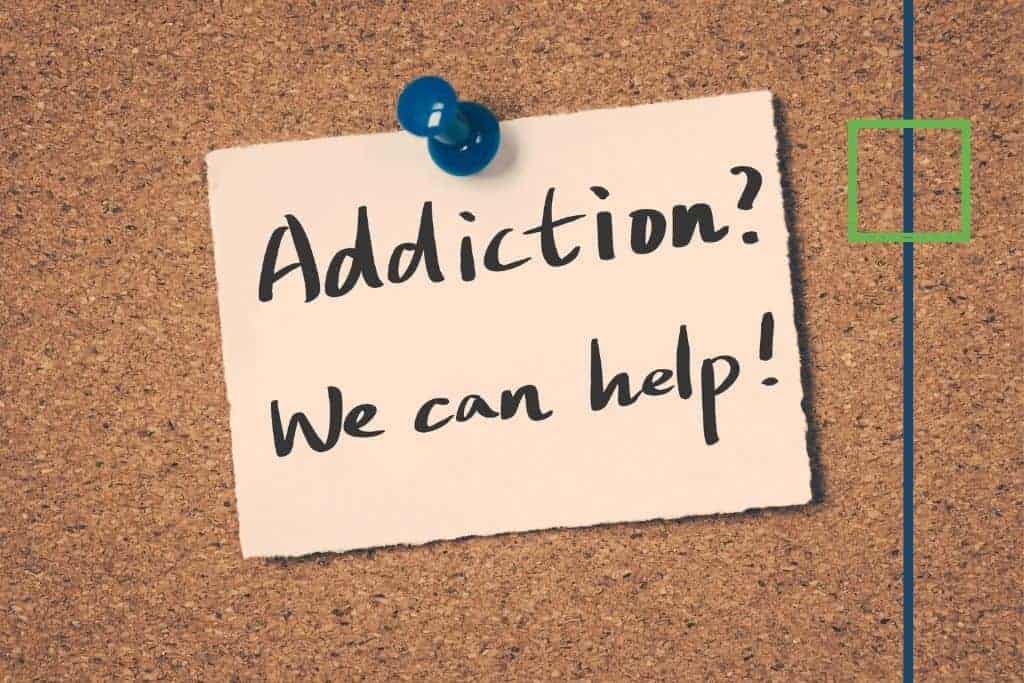
- Cognitive-Behavioral Therapy – A treatment to prevent relapse by increasing awareness of high-risk situations, developing coping skills, changing harmful behaviors, and managing cravings.
- Contingency Management – Interventions are motivational incentives in which tangible rewards reinforce positive behaviors such as attending treatment sessions and not using. As you stay sober, the rewards may increase in value.
- The Matrix Model – Incorporates behavioral therapy, individual therapy, family therapy, education, encouragement to participate in 12-step meetings, drug testing, and positive reinforcement of desirable behaviors such as avoiding substance use and attending treatment.
Searching for “meth addiction treatment near me?” We Level Up Treatment Center provides world-class care with round-the-clock medical professionals to help you cope. We all work as an integrated team providing Methamphetamine Addiction treatment for a successful recovery at our numerous Meth addiction treatment centers nationwide. Make this your opportunity to reclaim your life. Call today to speak with one of our treatment specialists. Our specialists know what you are going through and will answer any of your questions.
Your call is private and confidential, and there is never any obligation.
World-class, Accredited, 5-Star Reviewed, Effective Addiction & Mental Health Programs. Complete Behavioral Health Inpatient Rehab, Detox plus Co-occuring Disorders Therapy.
CALL(844) 597-1011End the Addiction Pain. End the Emotional Rollercoaster. Get Your Life Back. Start Drug, Alcohol & Dual Diagnosis Mental Health Treatment Now. Get Free No-obligation Guidance by Substance Abuse Specialists Who Understand Addiction & Mental Health Recovery & Know How to Help.
Meth Addiction Quotes
Methamphetamine misuse has several harmful repercussions, including addiction. Addiction is a recurrent, chronic condition defined by compulsive drug-seeking, use, and functional and molecular abnormalities in the brain.
In addition to being addicted to methamphetamine, long-term users may have symptoms such as considerable anxiety, disorientation, sleeplessness, mood problems, and aggressive conduct. They may also exhibit psychotic symptoms such as paranoia, visual and auditory hallucinations, and delusions (for example, the sensation of insects creeping under the skin). Psychotic symptoms can remain for months or years after a person has stopped using methamphetamine. Stress has been proven to cause the spontaneous return of methamphetamine psychosis in those who have previously had psychosis while using methamphetamine.
“I can pretty much guarantee that you will at some point find yourself doing something that at one point you swore you’d never do. You’ll do it for the sake of getting high, either directly or indirectly. Trust me. It will happen. You might think you know yourself better than anyone, but you have yet to become acquainted with your addiction. It will introduce itself in ways that you never thought were possible.”
― Ashly Lorenzana (meth addiction stories)
“I want to be good, do good, be a worker among workers, a friend among friends. But there’s also this part of me that is so dissatisfied with everything. If I’m not living on the verge of death, I feel like I’m not really living.”
― Nic Sheff, Tweak: Growing Up On Methamphetamines (stories and poems about meth addiction)
“It’s sad
that burnt marshmallows
make me think of
methamphetamine,
when they
should bring
back childhood
memories of
s’mores”
― Phil Volatile, Crushed Black Velvet (examples of meth addict poems)
“Breaking bad fans when they see a meth addict peal their skin off to get the bugs out.” ― Portrayal of a meth addict Breaking Bad Series
“My main concern was my teeth because they were in constant pain. Meth depletes the body of calcium, the vitamin essential to maintaining healthy teeth. It also includes acidic ingredients that can damage teeth. The ingredients include but are not limited to battery acid: Drano, over-the-counter cold medications like Sudafed, antifreeze, engine starter fluid, and brake fluid. Pop the hood of your car, and you can find the ingredients you need to cook meth. I’m no dentist, but I concluded that was the root of my tooth pain.”
― S.C. Sterling, Teenage Degenerate (one of the books about meth addiction and meth addiction poems)
“The longest I ever stayed up on meth was something like fourteen days. I started seeing these little creatures in my house. They looked so real to me that to this very day I could swear I actually saw them. They were these little men who looked like Stretch Armstrong dolls, but green. They were being manufactured under my house. They came up out of the ground and ran around my living room, and I would run around my house, chasing them, and shooting my gun at them.
Sometimes I hit one, and it died. Then, all of a sudden, the wall opened up, and the creatures grabbed him and dragged him back inside, so I couldn’t show anybody. That’s why nobody else could see them but me.”
― Todd Bridges, Killing Willis: From Diff’rent Strokes to the Mean Streets to the Life I Always Wanted
Faces of Meth Addicts Before & After Images Devastating Effects w/ Meth Face, Meth Mouth Video
The “Faces of Meth Addiction” project was first presented by the Multnomah County Sheriff’s Office in Portland, Oregon, in 2004. This awareness project aimed to educate the public, particularly young people, about the dangers of meth use and its potential consequences. The before and after pictures of meth addicts used in the project are shocking, as they portray individuals who have lost teeth, aged prematurely, and suffered from severe skin problems due to their drug usage. Meth is a highly habit-forming stimulant that can cause many physical and mental health issues, including heart problems, increased risk of stroke, paranoia, and hallucinations.
The “Images of Meth Addicts” project has successfully provoked widespread attention and raised awareness about the destructive effects of methamphetamine use disorder. The meth addict pictures before and after movement have also been adopted by other law enforcement agencies and organizations across the country and around the globe. In addition to the meth addiction photos, the “Face of Meth Addict” campaign also features resources and information for those struggling with methamphetamine and other substance use disorders, including therapy options and support groups. The “Meth Addict Before After” project’s greatest goal is to help stop and reduce the harm caused by meth addiction and encourage people to seek help if they or someone they know is struggling.
Experience Transformative Recovery at We Level Up Treatment Centers.
See our authentic success stories. Get inspired. Get the help you deserve.
Start a New Life
Begin with a free call to an addiction & behavioral health treatment advisor. Learn more about our dual-diagnosis programs. The We Level Up Treatment Center Network delivers recovery programs that vary by each treatment facility. Call to learn more.
- Personalized Care
- Caring Accountable Staff
- World-class Amenities
- Licensed & Accredited
- Renowned w/ 100s 5-Star Reviews
We’ll Call You
Search We Level Up Meth Addiction Detox, Treatment Options, Mental Health Topics & Resources
Sources
[1] Yasaei R, Saadabadi A. Methamphetamine. [Updated 2022 May 8]. In: StatPearls [Internet]. Treasure Island (FL): StatPearls Publishing; 2023 Jan-. Available from: https://www.ncbi.nlm.nih.gov/books/NBK535356/
[2] Karila L, Weinstein A, Aubin HJ, Benyamina A, Reynaud M, Batki SL. Pharmacological approaches to methamphetamine dependence: a focused review. Br J Clin Pharmacol. 2010 Jun;69(6):578-92. DOI: 10.1111/j.1365-2125.2010.03639.x. PMID: 20565449; PMCID: PMC2883750.
[3] Campillo R. My Experience and Recovery from Meth Addiction. Mo Med. 2022 Nov-Dec;119(6):500. PMID: 36588652; PMCID: PMC9762226.
[4] National Highway Traffic Safety Administration – April 2014 (Revised) Drugs and Human Performance Fact Sheets.
[5] We Level Up New Jersey – Rehab » Meth Addiction Treatment.
[6] How Long Does Meth Stay In Your System? Meth Drug Test Factors, Crystal Meth Half-life & Treatment – We Level Up Addiction Treatment Center.
[7] National Survey on Drug Use and Health (NSDUH) – Substance Abuse and Mental Health Services Administration.
[8] McKay JR. Impact of Continuing Care on Recovery From Substance Use Disorder. Alcohol Res. 2021 Jan 21;41(1):01. DOI: 10.35946 PMID: 33500871; PMCID: PMC7813220.
[9] Fluyau D, Charlton TE. Drug Addiction. [Updated 2022 Aug 29]. In: StatPearls [Internet]. Treasure Island (FL): StatPearls Publishing; 2022 Jan-. Available from: https://www.ncbi.nlm.nih.gov/books/NBK549783/
[10] Justinova Z, Panlilio LV, Goldberg SR. Drug addiction. Curr Top Behav Neurosci. 2009;1:309-46. DOI: 10.1007/978-3-540-88955-7_13. PMID: 21104390; PMCID: PMC3039293.


